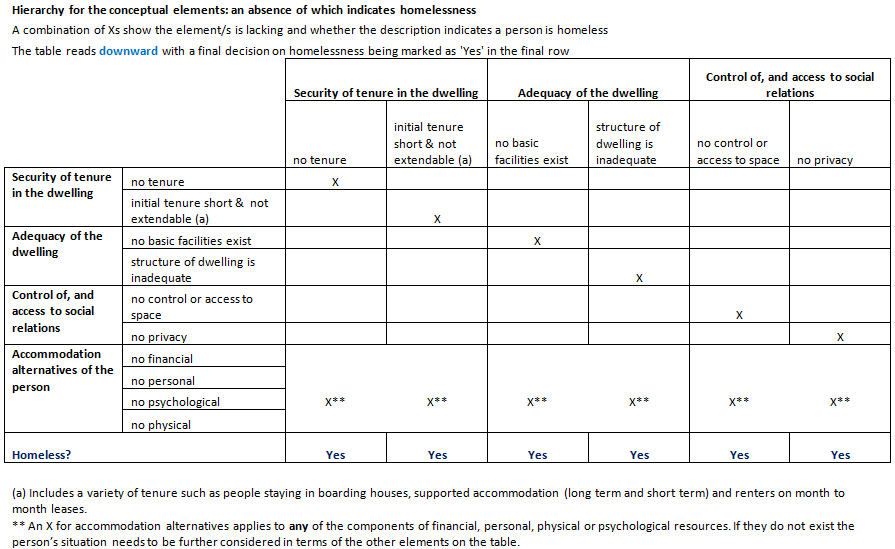SPECIFIC EXCLUSIONS
The ABS has identified and excluded specific living situations from the definition of homelessness. While these living situations lack one or more of the key elements of 'home' identified in the definition of homelessness, the people occupying these places are not regarded as homeless. People in these living situations are not classified as homeless because:
- they may have chosen to live in these circumstances and have accommodation alternatives; or
- are required by law to live in these circumstances; or
- are acceptable temporary living arrangements (such as student halls of residence); or
- it is essential for their broader health and wellbeing to be living in these situations.
The specific exclusions are:
- people confined in prisons, detention centres and other institutions such as juvenile correctional facilities or hospitals;
- students living in halls of residence; and
- members of religious orders such as monks and nuns living in seminaries and nunneries and similar establishments.
How the elements interact with accommodation to determine whether a living situation is homelessness
The following matrix articulates the application of the three elements of homelessness, where a person does not have either financial, physical, psychological or personal means to seek out suitable accommodation.
When a person does not have suitable accommodation alternatives they are considered homeless if their current living arrangement:
- is in a dwelling that is inadequate; or
- has no tenure, or if their initial tenure is short and not extendable; or
- does not allow them to have control of, and access to space for social relations.
The specific exclusions outlined earlier in the Chapter are exempt from evaluation in this matrix.

 Print Page
Print Page
 Print All
Print All